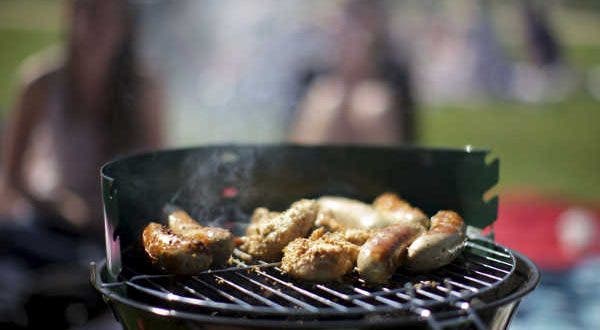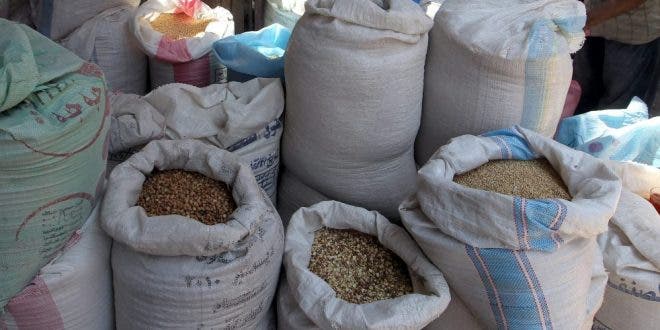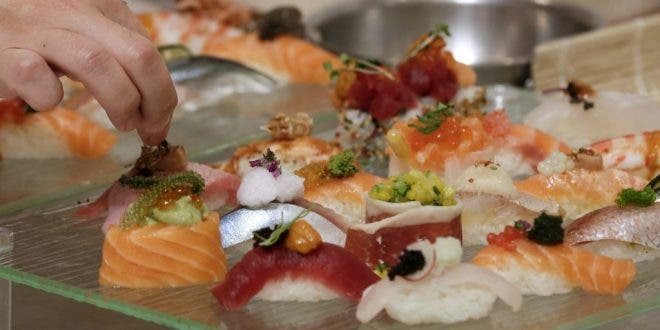Summer barbecues are commonly associated with excessive consumption of deli meats and meats rich in fat, alcohol, and sauces. Laura González, nutritionist and collaborator of “El Bisturí”, provides a series of recommendations and alternatives to make our barbecues healthier this summer, selecting leaner meats and including fish and vegetables among our grilled dishes
Barbecues are a very widespread practice with the arrival of summer. The heat, the good weather and the hours of sunshine make outdoor outings with friends and family proliferate while we enjoy varied dishes cooked on the grill.
“In a typical barbecue a lot of meat is consumed, especially red”, confirms the person in charge of Nutrition at Nestlé, Laura González. Most of these meats and sausages (bacon, sausage, blood sausage, chorizo) contain a lot of fat, to which we must also add the consumption of sauces and alcohol (beer, wine or red summer).
The recommendations indicate that this type of food and drink should be consumed as little as possible so that it does not become our usual routine. “We must remember that the food and beverages we take daily have an impact on our health,” says González in “El Bisturí.”
recommendations
To make barbecues healthier, the nutritionist gives five tips:
Choose the main dish well. We must prioritize lean meats and fish over sausages and fatty meats.
Use seasonal vegetables. “Grilled vegetables are delicious, and better if they are from proximity”, Laura González emphasizes. In addition, in this way we provide fiber, vitamins and minerals, and we contribute to the recommended servings of vegetables.
Appetizers, entrees, and sauces should be light, and made primarily from vegetables. For example, a sauce can be cucumber and spiced yogurt.
Reduce the consumption of sugary drinks and do without alcoholic beverages (beer, wine and red summer).
Desserts should be fruit-based. In this way we will be able to comply with the recommendations for fruit consumption.
The best meats
When it comes to selecting meats for the barbecue, “the low-fat parts of the pork and chicken are good options, although we can also select lean cuts of veal and beef,” reports the head of nutrition.
From the pork, Laura González selects the part of the loin and the rib. When it comes to cooking, “these parts usually take about ten minutes to be done on the barbecue on each side and must be done at a distance from the embers of approximately 10 centimeters,” she points out.
“Veal and beef (ribeye, entrecote, hamburgers, sirloin) are the star dishes”, underlines the specialist. However, these are red meat and it is important to select lean cuts. If they are minced meats, the nutritionist insists on reading the label to select those that contain more meat and less fat. As for the cooking time, it takes between 2 to 5 minutes for each side.
“The low-fat parts of the pork and chicken are good options, although we can also select lean cuts of veal and beef”
Chicken, especially thighs and wings, is a great ally for barbecues. “It can be given a particular touch if they are first marinated with adobo sauce, aromatic herbs, crushed garlic, chilli, curry, assorted peppers …”. It takes about 5 minutes on each side to cook.
“Lamb chops can be considered a barbecue delicacy, but it is better not to abuse them.” Laura González remembers that although they are very tasty and quick to prepare, they contain a lot of mostly saturated fat.
Fish and vegetables as an alternative
Oily fish, such as sardines, salmon, and mackerel, are also a healthy option for barbecues and a good way to provide healthy fat, protein, and vitamin D.
Sardines can be made by grilling or skewered. Grilled prawns or prawns are also a delicious alternative, recalls the specialist. “Place them one next to the other and without peeling, adding a few drops of oil or lemon and try to cook them for a few minutes on each side.” The skewers can be combined alternating with vegetables.
Oily fish, such as sardines, salmon, and mackerel, are also a healthy option
Among the vegetables that can be included Laura lists the mushrooms, chives, peppers, leeks, tomatoes, aubergine, zucchini, artichokes … “Vegetables are ideal for garnishes, in the form of skewers or laminated”, says the nutritionist, who suggests preparing the skewers by adding pieces of fruit (pineapple or mango) with a little olive oil.
“Let’s not forget the ears of corn.” If purchased with its pod, they can be placed directly on the embers for about 15 minutes, until the grains are soft and golden. They can be spiced up at the end with a little Parmesan cheese or a vinaigrette, he advises.
Vegetables are ideal for side dishes, in the form of skewers or laminated
If something cannot be missing from a barbecue, it is bread. According to the nutritionist, the most appropriate in these situations is loaf bread: “When you put it on the grill for a few seconds, it acquires a very special aroma.” Also the integral and traditional of the region are a preferred choice. All of them can be spread with a little tomato and olive oil, or with garlic, and become a delicacy.
Toxic substances in barbecues
“Cooking food at high temperatures produces chemicals that can be harmful especially when food comes into direct contact with fire.” Among the compounds with negative effects on health are acrylamide and others less known, such as polycyclic aromatic hydrocarbons, both related to different types of cancer.
To reduce the content of food cooked on the barbecue in these toxic substances, Laura González gives some recommendations:
Keep the food at a certain distance from the fire and avoid direct contact with the flame
Prepare the fire in advance so that these embers are created
Do not brown food too much: the more browned it is, the more of these substances can be absorbed
Cut and set aside the charred pieces of meat and do not eat them
Clean the grill regularly
In any case, it is important to bear in mind that if the consumption of barbecue food is done sporadically, it should not worry us too much. “The health effects of exposure to any dangerous substance will always depend on the dose, duration and time of exposure,” remarks the nutritionist.





